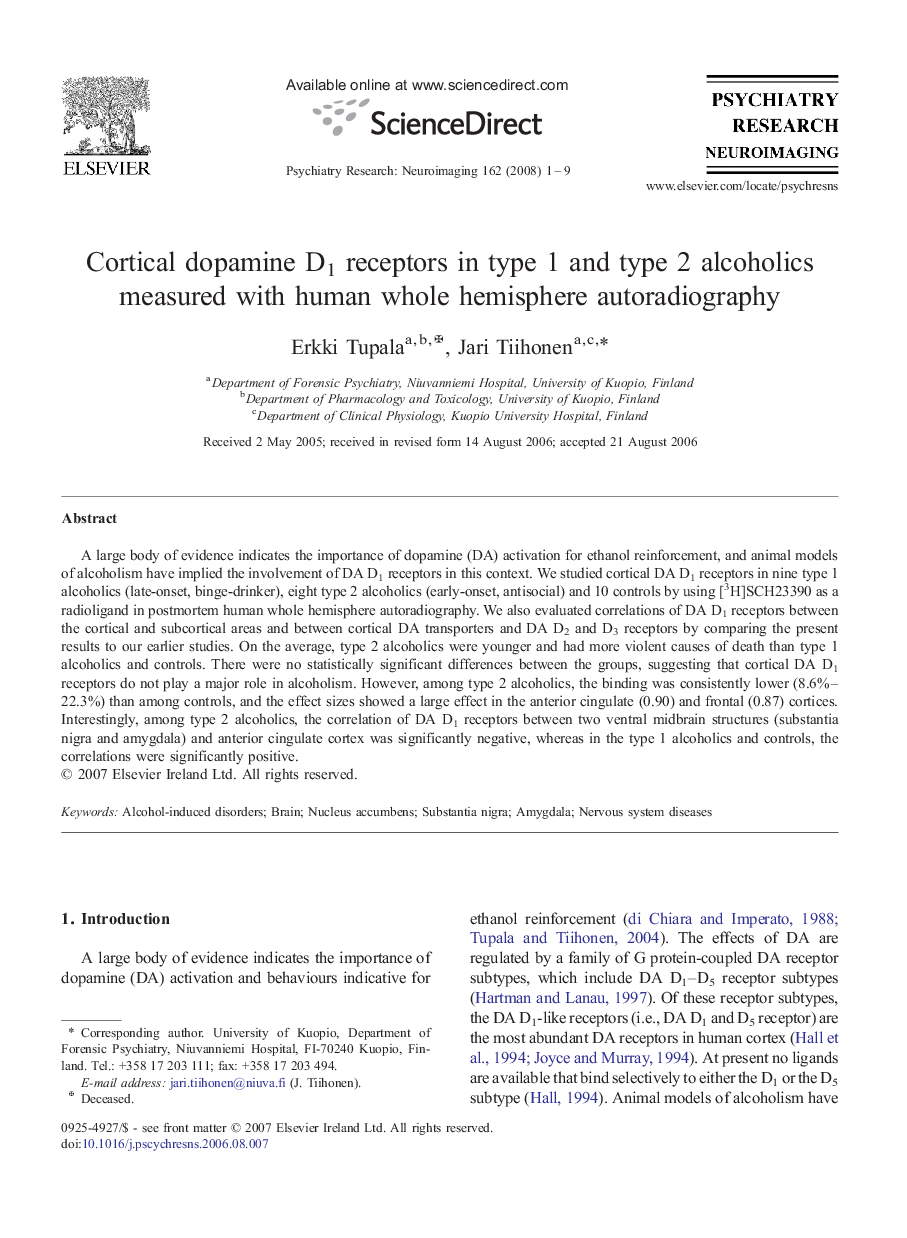| Article ID | Journal | Published Year | Pages | File Type |
|---|---|---|---|---|
| 334940 | Psychiatry Research: Neuroimaging | 2008 | 9 Pages |
A large body of evidence indicates the importance of dopamine (DA) activation for ethanol reinforcement, and animal models of alcoholism have implied the involvement of DA D1 receptors in this context. We studied cortical DA D1 receptors in nine type 1 alcoholics (late-onset, binge-drinker), eight type 2 alcoholics (early-onset, antisocial) and 10 controls by using [3H]SCH23390 as a radioligand in postmortem human whole hemisphere autoradiography. We also evaluated correlations of DA D1 receptors between the cortical and subcortical areas and between cortical DA transporters and DA D2 and D3 receptors by comparing the present results to our earlier studies. On the average, type 2 alcoholics were younger and had more violent causes of death than type 1 alcoholics and controls. There were no statistically significant differences between the groups, suggesting that cortical DA D1 receptors do not play a major role in alcoholism. However, among type 2 alcoholics, the binding was consistently lower (8.6%–22.3%) than among controls, and the effect sizes showed a large effect in the anterior cingulate (0.90) and frontal (0.87) cortices. Interestingly, among type 2 alcoholics, the correlation of DA D1 receptors between two ventral midbrain structures (substantia nigra and amygdala) and anterior cingulate cortex was significantly negative, whereas in the type 1 alcoholics and controls, the correlations were significantly positive.
